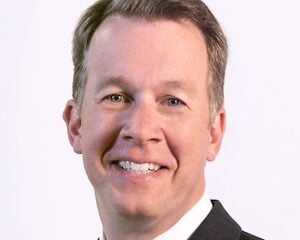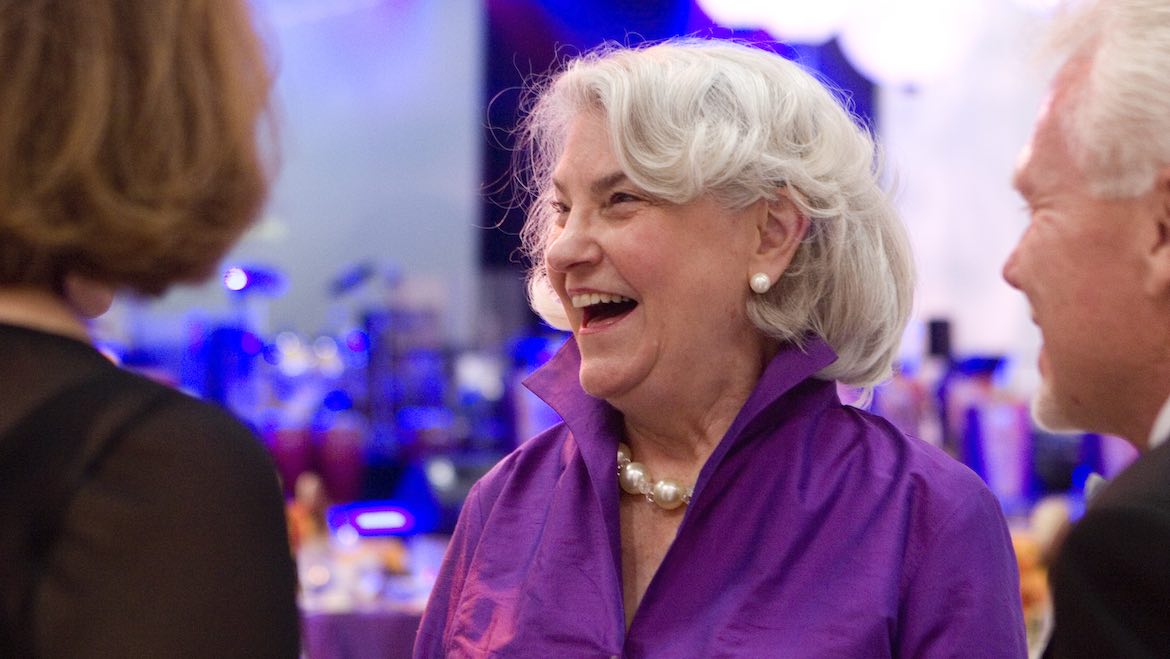Stalking of Minnesota host highlights common but little-discussed threat to female DJs

Lucia
The case of a Minnesota man charged with stalking a local public radio host is shining a rare spotlight on a problem faced by stations and on-air talent across the country.
Mary Lucia’s alleged stalker, Patrick Henry Kelly, appeared in Hennepin County District Court May 4. His trial is now scheduled to start Aug. 31, having been postponed twice. Kelly first contacted Lucia, a host on Minnesota Public Radio’s The Current, in March of 2014 to tell her that his dog had died. After she responded sympathetically, Kelly began harassing her.
Gifts left at her office and home, requests for dates, repeated efforts to contact her and disregarded restraining orders so upset Lucia that she took a leave of absence in April “to deal with this issue and take care of myself,” she wrote in a letter on The Current’s website April 9.
While the profile of the celebrity stalker hasn’t changed much over the years, technology has, as DJs use the Internet and social media to connect with fans. The lofty world of public radio is as affected as any broadcaster by the harassment that industry players describe as steady, ubiquitous and taking many forms.
“I like to think we have a different kind of listener, but that doesn’t mean they can’t be a cuckoo or a pervert,” said a public radio DJ who asked not to be named so as not to offend listeners. “And we make a lot of public appearances.”
Another host, Liz Berg at WFMU in Jersey City, N.J., said most female on-air talents she knows have experienced some form of stalking during their career. “If I’m in a room with other female broadcasters, the issue always comes up,” she said. “But it’s an invisible problem because it’s generally not reported to the police.”
DJs have received creepy letters and phone calls since radio’s early days. But the Internet provides easy access to home addresses, and Facebook and Twitter offer troves of personal detail, including lunch plans, parties, families, pets and vacation spots. Berg, citing privacy concerns, doesn’t use either service.
A handful of hosts and station managers interviewed described episodes of stalking, sometimes extreme, of themselves or colleagues, both in the past and ongoing. But they asked that their names not be published, citing privacy and safety concerns.
Pressure to be ‘more revealing’
Through an MPR spokesperson, Lucia declined to provide an interview to Current. But court records and her account of her ordeal in the letter she posted online describe months of fear and distress. Kelly was arrested in October but freed on bail on the condition that he stayed away from her.
“I hope no one ever has to go through this,” Lucia wrote. “My life over the last year has involved a series of restraining orders, seemingly endless calls to 911, the installation of security cameras at home and police photo-ID lineups. I’ve been constantly looking over my shoulder . . . jumping when someone rings my doorbell.”
Equally painful, she said, is that “I’m deathly afraid to reveal too much of myself on the air,” expressing what experts point to as the central conundrum of modern media stardom.
Broadcast talent today, by desire and design, “is pushed to be more revealing of their personal lives,” said forensic psychologist J. Reid Meloy, professor of psychiatry at the University of California, San Diego. “Twenty years ago, that didn’t happen.”
That can encourage delusional minds to forge a “virtual” relationship, while social media “creates opportunities for what seems like real interaction,” said Brian Spitzberg, Senate Distinguished Professor at the San Diego State University School of Communications.
Radio has its own particular allure. Spitzberg noted that the first movie to feature a stalking plot line, 1971’s Play Misty for Me, involved a radio disc jockey and an obsessed female fan.
https://www.youtube.com/watch?v=HVSw5H0MkpY
“It is an intimate, one-on-one medium. Sometimes we’re in the shower with you. We’re in the car with you. It’s personal. . . . You take a voice that’s attractive to you and attach anything you want to it,” said Jody Evans, president of the Public Radio Program Directors Association.
She speculated that the nature of public radio might enhance that personal dynamic. Listeners “think there’s this familiarity,” she said. “We make it easier to get in touch. We feel accessibility is important, and our listeners feel it’s important.”
WFMU’s Berg said, “Public stations are listener-supported. If we get an email or any kind of outreach from a listener, we feel obligated to respond. Commercial stations may have an assistant or a press contact, and we don’t always have that.”
Radio personalities, public and commercial, tend to be less protected than other celebrities. Detective Jeffrey Dunn, officer-in-charge of the Los Angeles Police Department’s Threat Management Unit, said radio hosts “are probably on the low end of the scale in terms of resources for security and for the A-list [threat] management teams that [other] celebrities have. I could imagine leaving a radio station at midnight, you’re fair game.”
Protective measures
Stations protect talent as best they can, but there’s no clear playbook. State laws generally define stalking as two episodes of harassment combined with a “credible threat.” In a medium with extensive public interaction, the point at which irritation turns into harassment, and when obnoxious becomes threatening, is often a judgment call.
“You go to corporate, you go to HR, you keep them informed,” said a former g.m. of major-market commercial radio and television stations who asked not to be named because of the sensitivity of the subject. “They may give you advice, but the g.m. manages the situation. You may just sit tight and monitor the situation. If something looks really demented, you don’t wait.”
“Every situation is a little different,” he added. “And everyone’s ability to cope is also different. Some people freak out with one email. With others, it takes more.”
One public radio g.m. said she hands out photos of bothersome fans to teams of volunteers during DJs’ public appearances. Others post pictures in the station lobby or ban uncouth commenters from radio chat rooms. Stations can hire security experts or turn to ATAP, the Association of Threat Assessment Professionals. Police are usually the last resort since cases can become public, which no one involved wants.
Minnesota Public Radio said it assigned a security guard to its lobby and worked with law enforcement from several jurisdictions on the Mary Lucia case.
“We are constantly evaluating security issues, often in consultation with external security experts,” an MPR spokesperson said in a statement. “As a member-supported organization with a public service mission, we strive to balance being open and welcoming while ensuring the safety of our staff.”
Once authorities are called in, police as well as prosecutors and judges, if the case goes to trial, have wide latitude in assessing the credibility and severity of the threat, so investigations and sentencing can vary among jurisdictions.
Stalking cases require significant time and resources, which can be a strain on small police departments. Stalking “often involves low-level kinds of behaviors perpetrated over a period of time, so that any one behavior might not be illegal, but the pattern is terrifying,” said Spitzberg.
Dunn’s unit was the first in the nation to specialize in stalking. It was created in 1990 after model and actress Rebecca Schaeffer was shot by an obsessed fan who had been following her for years. Within a decade, every state and the federal government had stalking laws in place.
Dunn noted that before the murder, Schaeffer’s killer “left a trail that would have been easy to find. Our department recognized the need.”
He urged stations to report offenders earlier rather than later. But handling such threats may be the price of being in the public eye. On-air personalities “[have] to be able to deal with it,” said the former g.m.








This is one aspect where, unfortunately, radio is radio. It doesn’t matter if it’s commercial radio, public radio, college radio, or any genre of radio: there’s always been stalkers of DJ’s. Usually male stalkers of female DJ’s, but sometimes the reverse, too.
I recall back in 2000 or 2001, at WBRS Brandeis U we decided to put a webcam in the air studio because we wanted to drive traffic to the website, and something that was constantly updating would give the audience a reason to stick around. This was in the days when most small college radio outlets didn’t have a CMS, and thus every web page was updated manually, so anything that could keep fresh content up AND be automatic was highly prized. It wasn’t even video; just stills that updated every 30 seconds.
It lasted about three weeks before someone noticed that some jerk…quite possibly not even someone at Brandeis…was taking screencaps of the female DJ’s and posting them to HotOrNot .com, and the commentary for each pic was, to put it mildly, incredibly offensive. 110% troll overload.
We quickly had to devise a means of allowing DJ’s to disable the camera when they did their shows, but only temporarily. Many DJ’s weren’t being harassed and in fact were interacting with fans in a very positive way through the cam. And if you just draped a washcloth over the camera, people tended to forget about it and leave it there for days. I think we eventually rigged up a physical button in the studio, that ran to a contact closure on the camera (it was an early-model Axis network cam) that ran a software script to shut it off for an hour.
Interestingly, I don’t think any of us (and I wasn’t a student, just one of two dozen community volunteers…although I was only 23 at the time) ever thought to go to the parent University for help. I don’t think the University would’ve been unsympathetic…as a largely Jewish-identified institution, Brandeis has always taken harassment against its students pretty seriously. Instead, I think it was a combination of shame coupled with the whole concept of the internet being so new that people didn’t know what “the rules” even COULD be, much less what they were. So we just assumed we had to solve the problem ourselves.
A somewhat noble sentiment, but very unfortunate. Today that would be borderline criminal to assume something like that. While it’s often not terribly effective, there IS a system and it DOES help to make use of it.
FWIW, though, this is also why I am no longer a proponent of “storefront studios” where the airstaff can be seen from the street. Especially for morning-drive DJ’s who may be in there when nobody else is going to be on the street, looking in, except for people who’re looking to harass the DJ.
Casey Kasem also had several harassing stalkers over the course of his career — to the point that the FBI had to get involved: http://www.thedailybeast.com/articles/2015/04/01/the-groupies-who-wanted-casey-kasem-dead.html